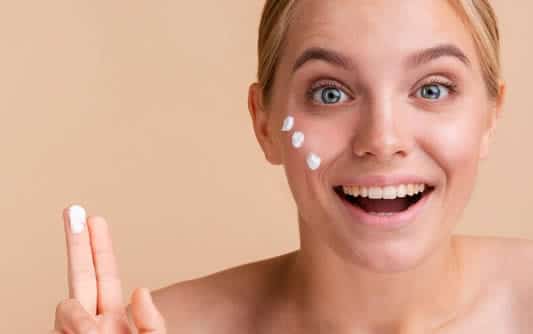Brown spots, though not inherently harmful, often prompt us to seek treatment for cosmetic reasons, driven by a desire to improve our appearance and boost self-esteem. While preventing hyperpigmentation is a less challenging and more cost-effective endeavor, treating existing spots can be a nuanced journey. In this pursuit, various methods, from over-the-counter creams to professional procedures, are available. However, navigating the safety and efficacy of these options is crucial for achieving desired outcomes without compromising skin health.
Brown spots are not dangerous. The only reason to have them treated is cosmetic – because we feel it will improve our appearance, make us look younger and ultimately enhance our self-esteem. Treating existing hyperpigmentation is harder than preventing it and is much more expensive.
Lightening creams:
These are easily accessible but are they safe? There are over-the-counter skin-lightening creams such as kojic acid serums, vitamin C serums, lactic, azelaic and glycolic acid preparations, which are relatively safe. There are also over-the-counter and prescription strength hydroquinone creams, which are rather controversial because they increase the risk for developing a skin condition called ochronosis. This is a blue-gray pigmentation caused by the long-term use of hydroquinone. It may or may not go away after stopping the use of hydroquinone. My advice is to be super cautious with this one if you do not want more problems.
Retinoids or Vitamin A derivatives:
These are also helpful in the fight for younger and lighter skin. They stimulate the production of collagen and exfoliate the skin gently by speeding up the cell turnover. They may cause irritation to the skin so start using your retinoid slowly – 2-3 times a week at first, then increase frequency of use gradually, moisturize and use excellent sun protection. An over-the-counter Vitamin A derivative called Differin (adapalene) gel used to require a prescription. I recommend that you start by using this product first before moving on to something stronger and more irritating like Tazorac, which does require a prescription.
Cryotherapy:
Your dermatologist or medical provider can perform this procedure in the office but it is not usually covered by insurance because it is considered cosmetic. It also has the potential to leave you with permanent white spots or even more hyperpigmentation.
Laser treatment:
Many options are also available in dermatology facilities or Medical Spas in the community. However, it is important to find the right provider to perform those treatments on you in order to avoid scarring or more complications. The laser technician also needs to be familiar with settings for your skin color, especially if you are a dark-skinned individual or otherwise you are risking permanent skin discoloration.
Chemical peels and Intense pulse light (IPL) treatments:
These can lighten the skin as well. IPL is a pulsed light device that distributes a broad wavelength of energy that is absorbed by the pigment of the brown spot and destroys it. TCL and glycolic acid chemical peels are also very effective with fighting sun spots by exfoliating the skin and getting rid of the top layer of damaged skin.
In the quest for lighter and younger-looking skin, the array of treatments, from accessible lightening creams to advanced laser procedures, offers diverse options. Yet, the path to skin rejuvenation requires careful consideration. Safety concerns surround certain over-the-counter and prescription creams, emphasizing the importance of informed choices. Whether opting for retinoids, cryotherapy, laser treatments, or chemical peels, selecting a skilled dermatologist is paramount to avoid potential complications.


